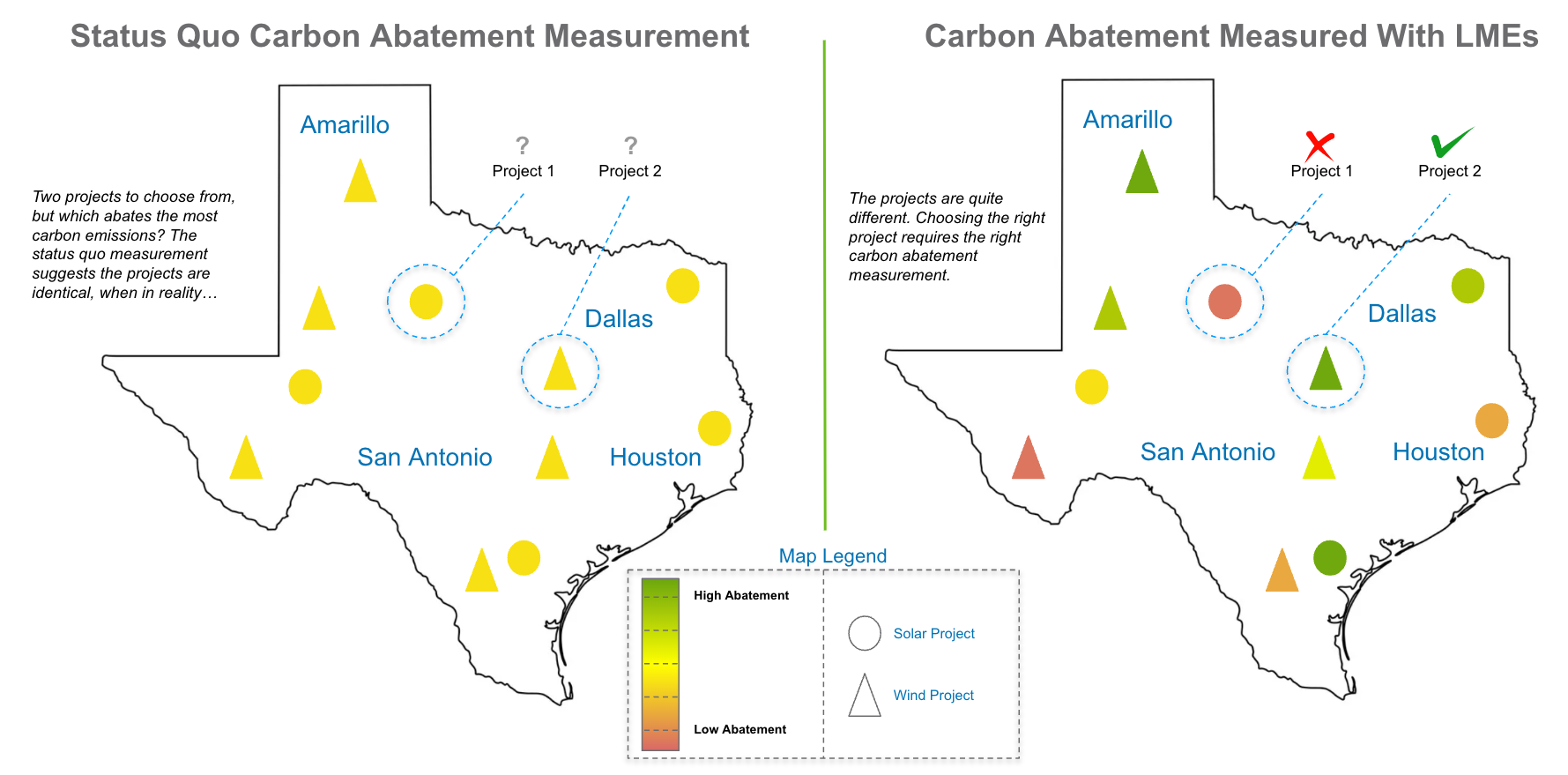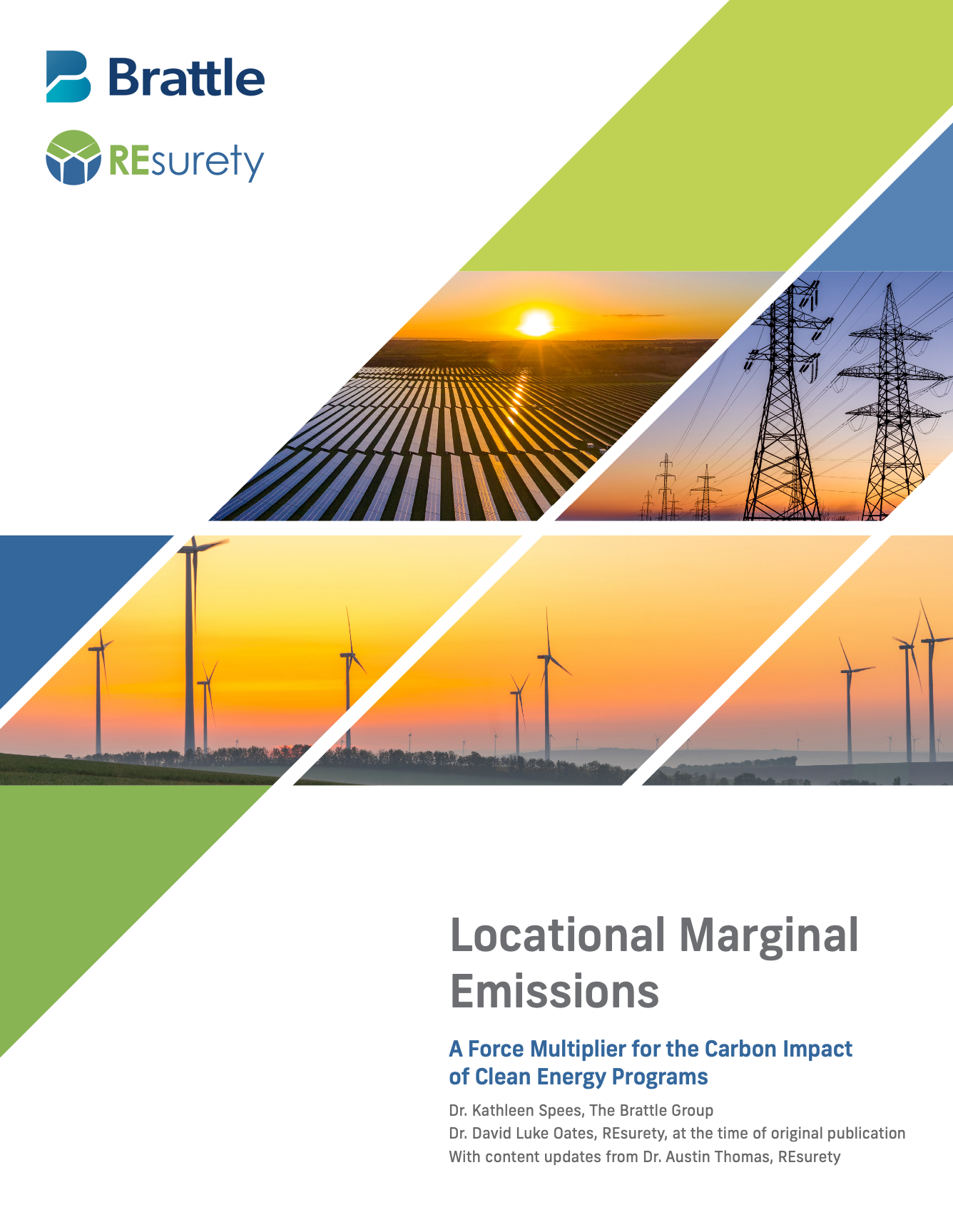Locational Marginal Emissions is a metric that measures the tons of carbon emissions displaced by 1 MWh of clean energy injected to the grid at a specific location and a specific point in time.
Locational Marginal Emissions (LMEs) are calculated at each power system node in a manner very similar to the Locational Marginal Prices (LMPs) used to set wholesale electricity market prices. LMEs measure emissions by identifying the marginal generators: the generators that would have been producing energy but for the renewable injection to the grid at that location at that moment. LMEs data is available in CleanSight, learn more.
Applications
Better clean energy procurement
LMEs reflect the impact of transmission congestion on carbon emissions and can be used to support granular siting decisions as well as generation technology selection.
Accurate assessment of the carbon value of energy storage
High time-granularity LMEs can accurately evaluate the carbon benefits of energy storage that charges when emissions intensities are low and discharges when emissions intensities are high.
Higher overall carbon abatement per dollar
LMEs support calculation of carbon abatement cost effectiveness metrics for candidate clean energy projects, enabling investors, consumers, and policymakers to maximize the carbon impact of their clean energy program dollars.
Product Offerings
Reporting for existing or planned projects
- Measure the carbon emissions abated by your actual or planned clean energy purchases, storage developments, or resulting from load center operations.
- Monitor carbon emissions data over time to track progress towards carbon neutrality goals.
- Available as a subscription or à la carte analysis to inform clean energy procurement or investment decisions.
API Access
- Programmatic access to historical LME data for thousands of load and generation node locations at the hourly level for ERCOT, PJM, CAISO, MISO, SPP, NYISO and ISONE, and at the five minute level for PJM.
- Identify high carbon impact locations and develop siting, technology, and dispatch strategies to maximize decarbonization.
Impact
- Impact offers the ability to view and analyze historical and forecasted LME data for operational wind and solar projects in ERCOT, PJM, CAISO, SPP, MISO, NYISO, and ISONE.
- Quickly access high quality carbon emissions data paired with generation at the monthly (forecasted and historical) and hourly level (historical only).
- Learn more at: https://resurety.com/discover-and-impact/.
Learn how Akamai uses LMEs to calculate avoided emissions more accurately, understand why their emissions are what they are, and to evaluate new PPA opportunities.
LMEs help you measure and maximize the carbon impact of each renewable energy project, storage asset, or load center.
The carbon emissions avoided by a given MWh of clean energy varies widely, even across projects located within the same region in the grid. LMEs provide hourly visibility into the projects and activities that maximize your path to decarbonization, and those that don’t.





